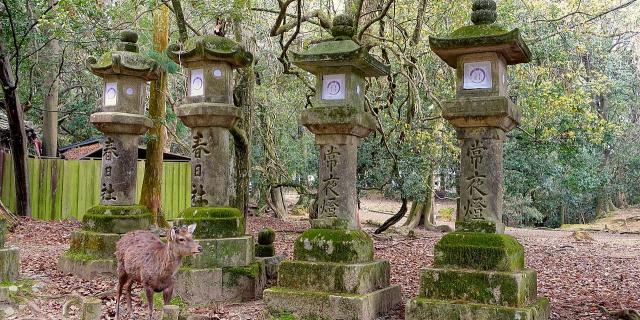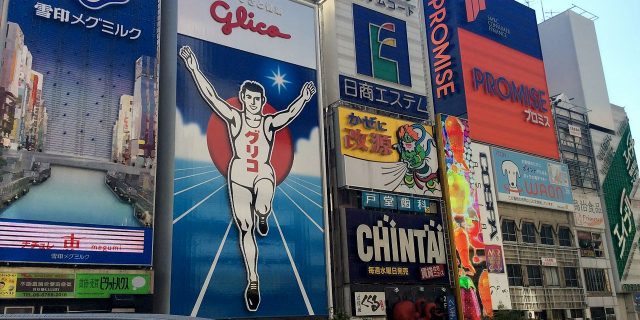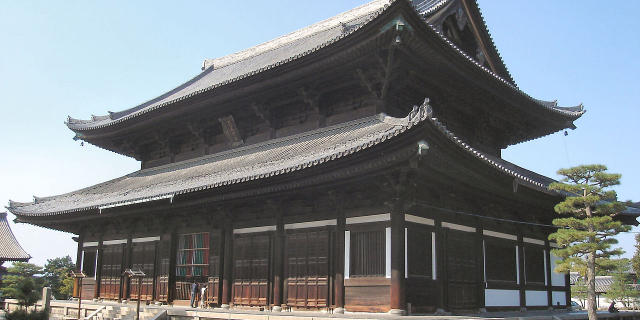Tōdai-ji (東大寺, Todaiji temple, "Eastern Great Temple") is a Buddhist temple complex that was once one of the powerful Seven Great Temples, located in the city of Nara, Japan. Though it was originally founded in the year 738 CE, Tōdai-ji was not opened until the year 752 CE. The construcion of the temple was an attempt to imitate Chinese temples from the much-admired Tang dynasty. The temple has undergone several reconstructions since then, with the most significant reconstruction (that of the Great Buddha Hall) taking place in 1709. Its Great Buddha Hall (大仏殿 Daibutsuden) houses the world's largest bronze statue of the Buddha Vairocana, known in Japanese as Daibutsu (大仏). The temple also serves as the Japanese headquarters of the Kegon school of Buddhism. The temple is a listed UNESCO Wor...Read more
Tōdai-ji (東大寺, Todaiji temple, "Eastern Great Temple") is a Buddhist temple complex that was once one of the powerful Seven Great Temples, located in the city of Nara, Japan. Though it was originally founded in the year 738 CE, Tōdai-ji was not opened until the year 752 CE. The construcion of the temple was an attempt to imitate Chinese temples from the much-admired Tang dynasty. The temple has undergone several reconstructions since then, with the most significant reconstruction (that of the Great Buddha Hall) taking place in 1709. Its Great Buddha Hall (大仏殿 Daibutsuden) houses the world's largest bronze statue of the Buddha Vairocana, known in Japanese as Daibutsu (大仏). The temple also serves as the Japanese headquarters of the Kegon school of Buddhism. The temple is a listed UNESCO World Heritage Site as one of the "Historic Monuments of Ancient Nara", together with seven other sites including temples, shrines and places in the city of Nara.
 A model of the garan of Tōdai-ji at the time of its foundation, seen from the north side, a part of 1/1000 scale model of Heijōkyō held by Nara City Hall.
A model of the garan of Tōdai-ji at the time of its foundation, seen from the north side, a part of 1/1000 scale model of Heijōkyō held by Nara City Hall. Map of the Tōdai-ji complex with a number of buildings that do not exist anymore, such as the two pagodas, and the library, lecture hall, refectory, and monks' quarters behind the main hallOrigins
Map of the Tōdai-ji complex with a number of buildings that do not exist anymore, such as the two pagodas, and the library, lecture hall, refectory, and monks' quarters behind the main hallOrigins
 Record of temple lands in Echizen Province in 757 (ICP); as head of the national network of Provincial Temples, Tōdai-ji's privileges included a large network of tax-exempt estates[1][2]
Record of temple lands in Echizen Province in 757 (ICP); as head of the national network of Provincial Temples, Tōdai-ji's privileges included a large network of tax-exempt estates[1][2]Emperor Shomu (r. 724–749) ordered the monk-architect Roben to build a temple at Nara between 728 and 749.[3] This decree represented an attempt to imitate Chinese temples from the much-admired Tang dynasty.[4] Todaiji is well-known for the Nara Daibutsu, also known as "The Great Buddha of Nara," which is an image of the Buddha Birushana.[5] The current Buddha was repaired after suffering significant damage in 1692.[6] Under the leadership of Abbot Shunjobo Chogen (1121–1206), numerous structures at Todaiji were rebuilt in 1180 in the fashion of the Southern Song dynasty of China.[7]
During the Tenpyō era, Japan suffered from a series of disasters and epidemics. It was after experiencing these problems that Emperor Shōmu issued an edict in 741 to promote the construction of provincial temples throughout the nation. Later in 743 during the Tenpyō era the Emperor commissioned the Daibutsu to be built in 743.[8] Tōdai-ji (still Kinshōsen-ji at the time) was appointed as the provincial temple of Yamato Province and the head of all the provincial temples. With the alleged coup d'état by Nagaya in 729, a major outbreak of smallpox around 735–737,[9] worsened by several consecutive years of poor crops, followed by a rebellion led by Fujiwara no Hirotsugu in 740, the country was in a chaotic situation. Emperor Shōmu had been forced to move the capital four times, indicating a certain level of instability during this period.[10]
Role in early Japanese Buddhism Tōdai-jiAccording to legend, the monk Gyōki went to Ise Grand Shrine to reconcile Shinto with Buddhism. He spent seven days and nights reciting sutras until the oracle declared Vairocana Buddha compatible with worship of the sun goddess Amaterasu.[11]
 A Model of the Kondo (Great Buddha Hall) at the time of foundation. The original hall was larger than the one built after it.
A Model of the Kondo (Great Buddha Hall) at the time of foundation. The original hall was larger than the one built after it.Under the Ritsuryō system of government in the Nara period, Buddhism was heavily regulated by the state through the Sōgō (僧綱, Office of Priestly Affairs). During this time, Tōdai-ji served as the central administrative temple for the provincial temples[12] and for the six Buddhist schools in Japan at the time: the Hossō, Kegon, Jōjitsu, Sanron, Ritsu and Kusha. Letters dating from this time also show that all six Buddhist schools had offices at Tōdai-ji, complete with administrators, shrines and their own library.[12]
 The Great South Gate (nandaimon), a National Treasure (13th century)
The Great South Gate (nandaimon), a National Treasure (13th century)Japanese Buddhism during this time still maintained the lineage of the Vinaya and all officially licensed monks were required to take their ordination under the Vinaya at Tōdai-ji. In 754 CE, ordination was given by Ganjin, who arrived in Japan after traveling over 12 years and six attempts of crossing the sea from China, to Empress Kōken, former Emperor Shōmu and others. Later Buddhist monks, including Kūkai and Saichō received their ordination here as well.[13] During Kūkai's administration of the Sōgō, additional ordination ceremonies were added to Tōdai-ji, including the ordination of the Bodhisattva Precepts from the Brahma Net Sutra and the esoteric Precepts, or Samaya, from Kukai's own newly established Shingon school of Buddhism. Kūkai added an Abhiseka Hall to use for initiating monks of the six Nara schools into the esoteric teachings[14] by 829 CE.
DeclineAs the center of power in Japanese Buddhism shifted away from Nara to Mount Hiei and the Tendai sect, and when the centre of political power in Japan moved from the emperor's capital to the shōgun's base in Kamakura in the aftermath of the Genpei war, Tōdai-ji's role in maintaining authority declined. In later generations, the Vinaya lineage also died out, despite repeated attempts to revive it; thus no more ordination ceremonies take place at Tōdai-ji.


































Add new comment